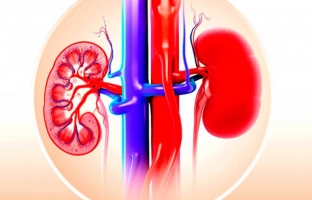The human body is a complex and multifunctional mechanism, in which there is nothing superfluous. All organs and structures of the human body function smoothly, and the pathological state of any of the body systems affects the work of all the others. The urinary system is one of the most important systems in the human body, because it is a kind of filter that helps to filter out and remove all unnecessary substances from the body. The kidneys, as filtration organs located in the abdominal cavity, should be protected from damage as much as possible. Perirenal fiber is a kind of airbag that protects the kidneys from injury. But even in this fiber, pathological processes can occur. What is paranephritis and why does it occur - knows estet-portal.com.
Etiology and features of the clinical picture of paranephritis
Paranephritis is an inflammation of the perirenal tissue. Most often, paranephritis develops in men aged 20 to 50 years, while the inflammatory process in most cases occurs on the left, and extremely rarely on both sides. In 80% of cases, this disease develops as a complication of some inflammatory process in the tissues of the kidney. The inflammatory process can occur acutely, or over time take on a chronic course. The main danger of paranephritis is that due to the inflammatory process in the perirenal tissue, pus is formed and accumulated, while such an abscess formed can break into the abdominal cavity and lead to the development of peritonitis.
Paranephritis:
- classification of paranephritis according to localization and nature of the process;
- etiology of paranephritis: what provokes inflammation of the perirenal tissue;
- clinical picture of paranephritis: symptoms of the disease.
Classification of paranephritis by localization and nature of the process
Distinguish between primary and secondary paranephritis. In secondary paranephritis, the infectious process develops as a result of purulent-inflammatory processes directly in the kidney, for example, in acute pyelonephritis, carbuncle of the kidney, and so on. With primary paranephritis, the infection enters the perirenal tissue with blood flow from a purulent focus of another localization. Depending on the nature of the inflammatory process, paranephritis can be infiltrative, purulent and sclerosing. By localization, paranephritis is classified as follows:
- upper paranephritis - the inflammatory process is localized in the region of the upper pole of the kidney;
- lower paranephritis - inflammation under the lower pole of the kidney;
- anterior paranephritis - inflammation between the kidney and large intestine;
- posterior paranephritis - a process between the kidney and the muscles of the lower back;
- total paranephritis - all perirenal tissue is affected.
Etiology of paranephritis: what provokes inflammation of the perirenal tissue
In most cases, paranephritis occurs as a complication of purulent-inflammatory processes in the kidneys. Secondary paranephritis can be caused by Escherichia coli, Proteus, Pseudomonas and Staphylococcus aureus. At the same time, the type of microflora that causes a destructive process in the perirenal tissue depends on the localization and nature of the pathological process in the kidneys. For example, with felon or furuncle of the kidney, the etiological factor of paranephritis is most often staphylococcus aureus. Primary paranephritis develops against the background of an inflammatory process of another localization, in this case, the pathogenic flora is most often gram-positive, for example, with cholecystitis, Escherichia coli will be the cause of the development of paranephritis.

Clinical picture of paranephritis: symptoms of the disease
The clinical picture of paranephritis at the onset of the disease is manifested by symptoms of the development of an infectious process in the body. The patient is concerned about the rise in body temperature to febrile values, chills, general weakness, fatigue, nausea and vomiting. Over time, pain syndrome joins: pain occurs in the lower back and that hypochondrium, where the inflammatory process is localized. The tension of the muscles of the abdomen and lower back is determined, due to the protective contraction of the lumbar muscles, the patient develops scoliosis with a curvature of the spine towards a healthy kidney. A characteristic symptom of secondary paranephritis is pyuria - the excretion of pus in the urine.






Add a comment